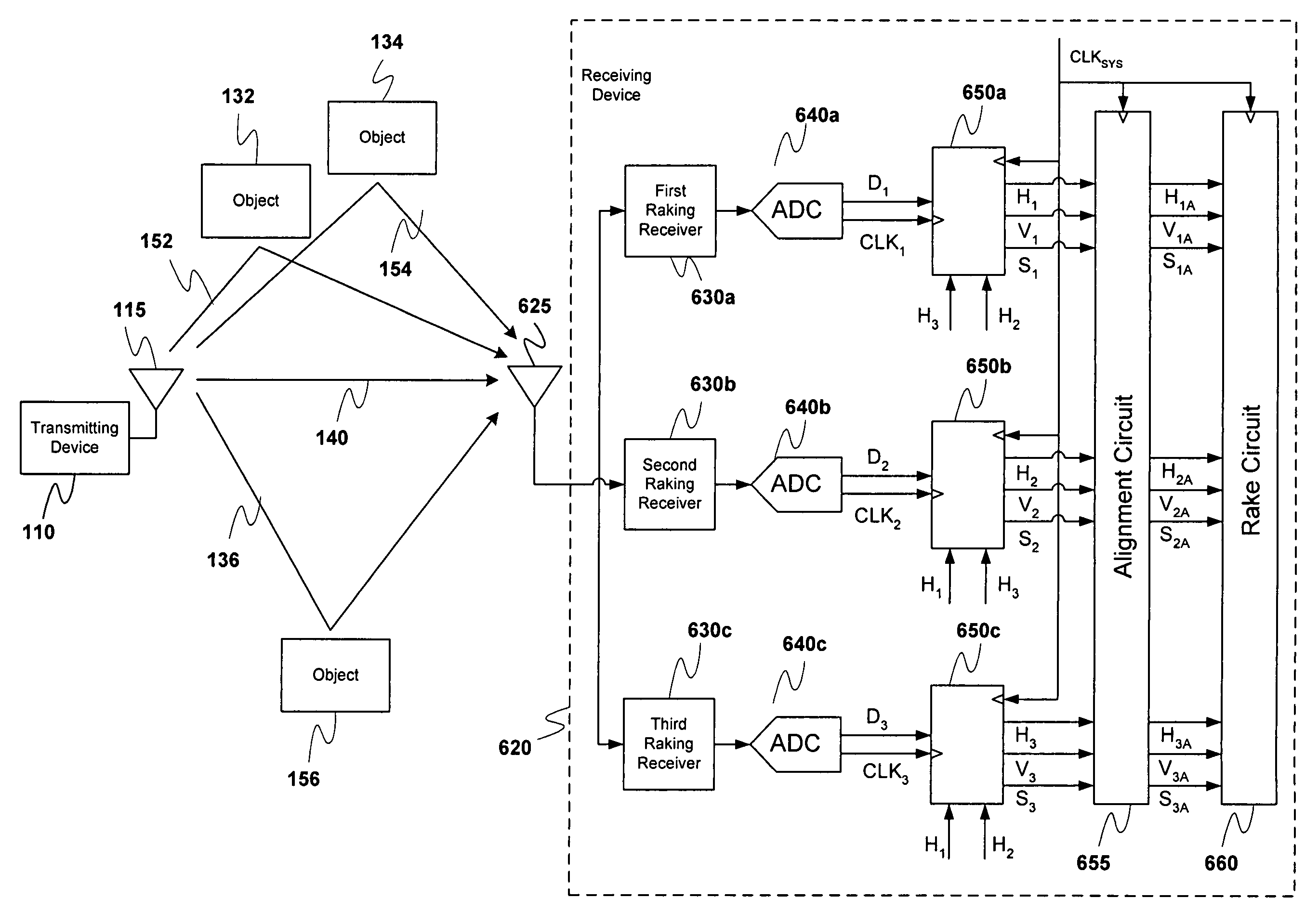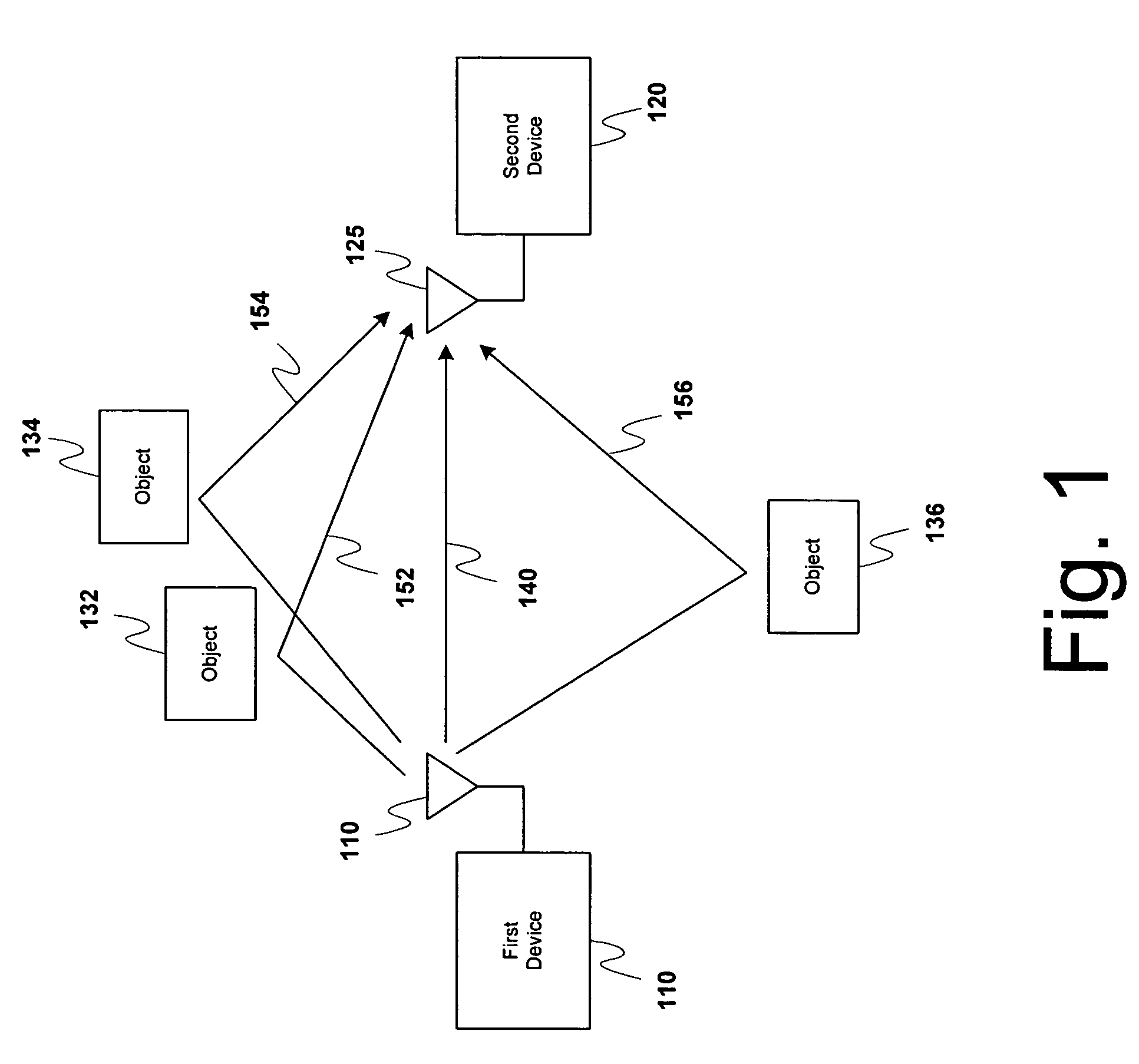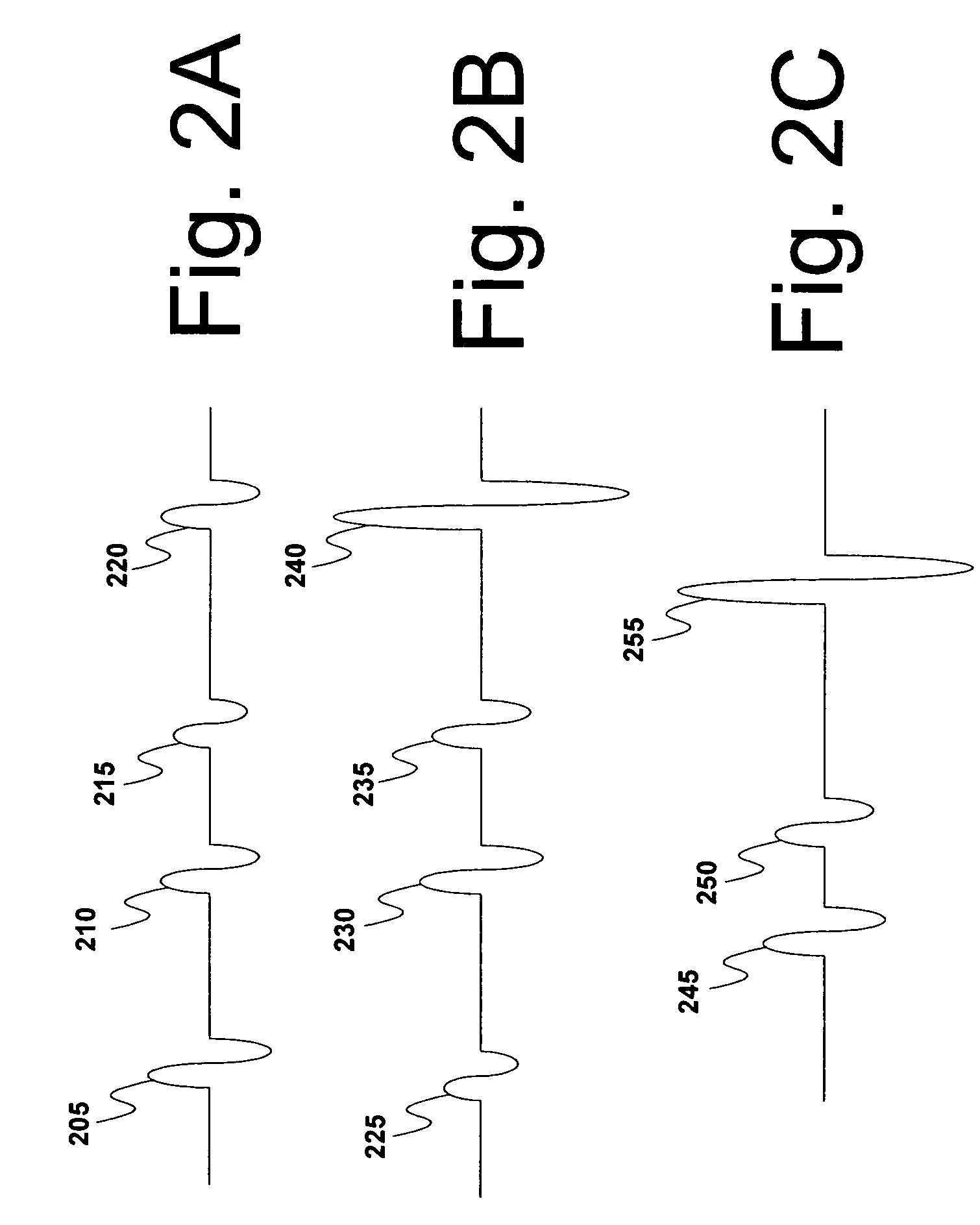Method for combining data from phase indeterminate data streams for raking
a technology of phase indeterminate data and raking, applied in the direction of synchronisation signal speed/phase control, digital transmission, transmission, etc., can solve the problems of difficult and expensive process, narrowband radios suffer in multipath environments
- Summary
- Abstract
- Description
- Claims
- Application Information
AI Technical Summary
Benefits of technology
Problems solved by technology
Method used
Image
Examples
Embodiment Construction
[0033]Preferred embodiments of the present invention will now be described with reference to the drawings. Throughout the several views, like reference numerals designate identical or corresponding parts.
[0034]In a preferred embodiment of a wireless local area network (WLAN) or a wireless personal area network (WPAN), the total transmission distance (even including reflections) will likely be less than 20 meters. In such an embodiment, the time difference between the direct path and various reflections will be on the order of 1 to 40 nanoseconds.
[0035]The idea behind raking can be described with respect to the system of FIG. 1. In this system, there is one transmitter (the first device 110) and one receiver (the second device 120). However, any transmission may travel along multiple paths 140, 152, 154, 156 to get from the transmitter 110 to the receiver 120. Thus, the receiver 120 may receive multiple copies of the same data signal arriving at different times (i.e., the received si...
PUM
 Login to View More
Login to View More Abstract
Description
Claims
Application Information
 Login to View More
Login to View More - R&D
- Intellectual Property
- Life Sciences
- Materials
- Tech Scout
- Unparalleled Data Quality
- Higher Quality Content
- 60% Fewer Hallucinations
Browse by: Latest US Patents, China's latest patents, Technical Efficacy Thesaurus, Application Domain, Technology Topic, Popular Technical Reports.
© 2025 PatSnap. All rights reserved.Legal|Privacy policy|Modern Slavery Act Transparency Statement|Sitemap|About US| Contact US: help@patsnap.com



